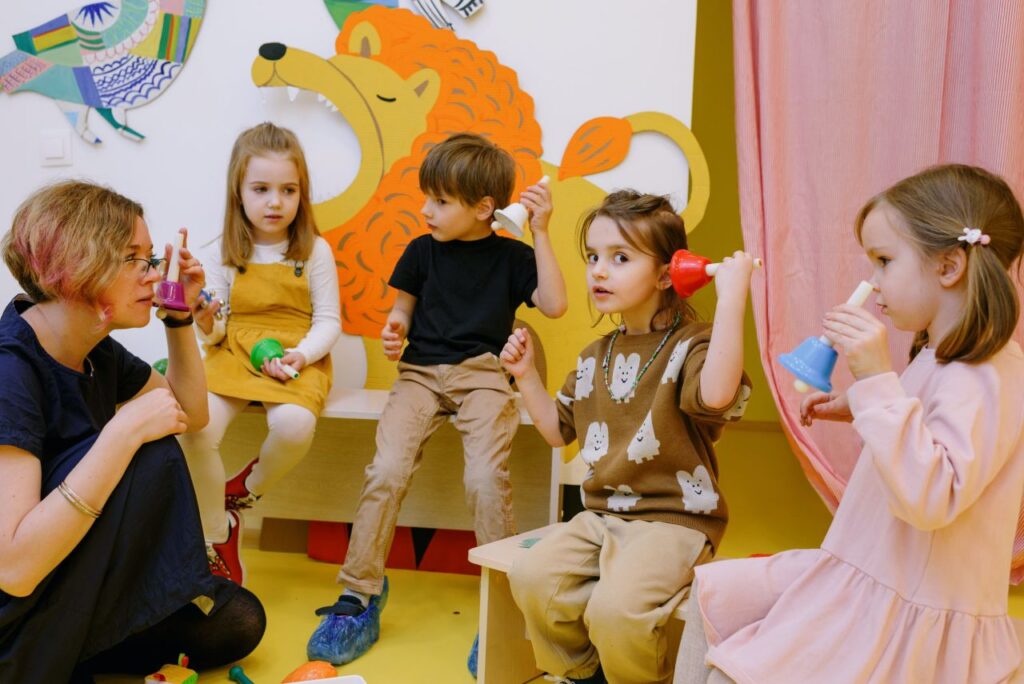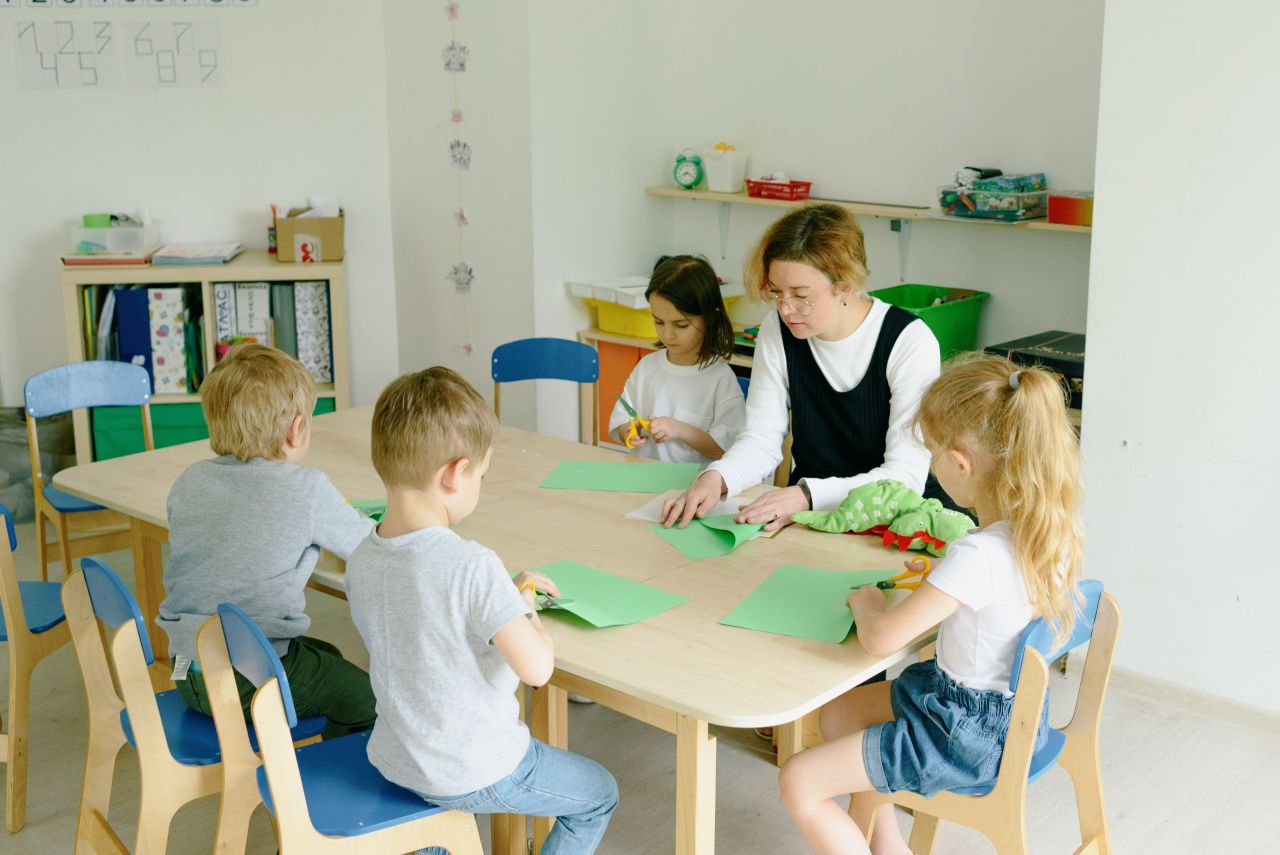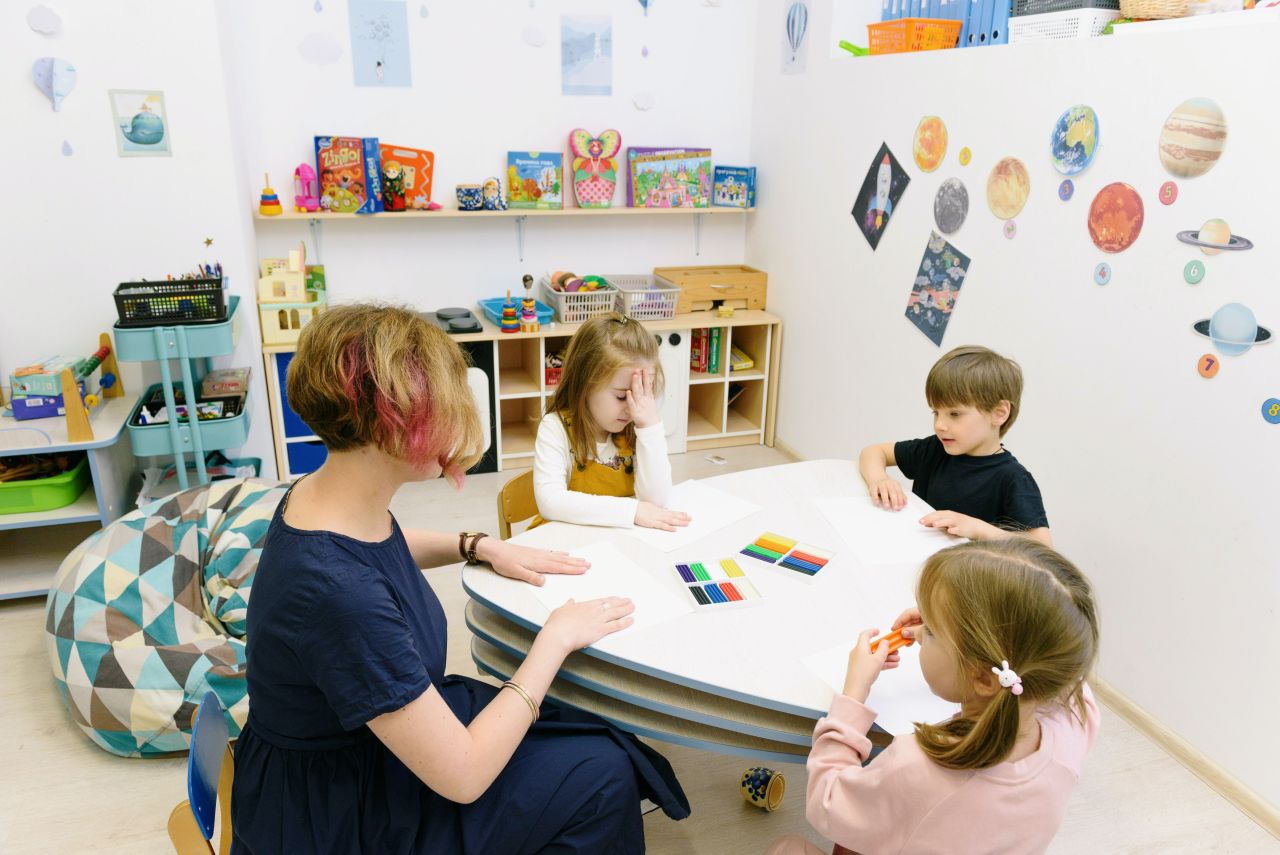When most people think about the education system, they likely think about standardised tests, homework, and lectures. While these are all important aspects of schooling, the importance of closing learning gaps is often overlooked. A learning gap occurs when students fall behind their peers in academic achievement.
It can be due to several factors, such as poverty or poor teaching methods. However, if left unchecked, a learning gap can significantly impact a student's future success. Thankfully, there are things that we can do to help close learning gaps.
Learning Gaps: Types, Examples, And Tips To Solve Them
Students often experience gaps in their learning when a particular concept or subject taught in school is not fully understood. Here's why learning gaps are a problem – and how to fix them!
When talking about learning gaps, it's important to understand how they form. Learning is based on educational building blocks (in the sense that new knowledge "builds" upon previous concepts taught). Teachers have to cover a lot of content each year, and sometimes the class needs to move on to the next chapter. If a student didn't really "get it", – there's a good chance that any future concepts that rely on understanding this knowledge are going to be even more difficult to grasp. It is how learning gaps begin to form.
Learning gaps have always been common in education, but the last year has been especially difficult for students. The transition to online learning has been a lot tougher on some students than others, and unfortunately, this has led to an increase in learning gaps. The issue is compounded for students who were let out from school early last year, with some experiencing over six months of "downtime" before starting virtual classes in the fall. To learn more about the "COVID slide" that many students are just starting to recuperate from, check out our blog on the topic here.
One of the biggest challenges in addressing learning gaps is that students are not always aware of their struggles. As a result, identifying learning gaps should be the first step any tutor or academic coach takes to create an individualised plan for the student moving forward.
In general, the best way to address learning gaps is simple – go back and revisit the areas that need extra work. Although this seems like an obvious answer, remember that learning gaps form because students are often forced to "move on" with their class's pace, regardless of whether or not they have gained a firm understanding of the concept being taught. Tutors have the unique ability to go back and revisit previous topics and subjects that weren't clear, working one on one at the student's pace. As the student gains clarity into concepts that were not understood previously, the gaps in their learning will gradually begin to close.
In the last 18 months, students have adapted to new ways of learning—including switching between virtual and hybrid learning models on the fly.
Many young learners experienced significant disruptions in their curriculum during this time, such as schedule changes, glitchy technology, midyear teacher replacements, and at-home distractions. Unfortunately, these disruptions have led to many students experiencing learning loss and learning gaps in their education.
Although school districts and teachers did their best to protect their students and provide good distance learning environments, a recent research paper by McKinsey reports the impact of the pandemic on K–12 learning left students an average of five months behind in mathematics and four months behind in reading by the end of the 2020-2021 school year. What's more, that same McKinsey report shows that you widened pre-existing educational inequities, as low-income schools with fewer resources felt the effects of this transformation the most.
As we approach the second half of the 2021-2022 school year, we now realise the long-lasting effects that learning gaps have had on our students—and it's important to help bring them back up to speed while caring for ourselves, too. But, of course, making changes to a learning environment affects both students and educators, so let's pause before considering any hard and fast solutions.
While data is not yet available on how the nation's overall dropout rate was affected in 2020, anecdotal evidence suggests that fewer students are completing high school or moving on to postsecondary education. It is a major red flag.
The conversation is ongoing. Moving forward, educators should keep listening closely and look at what others are doing, so we can collaborate on finding ways to address this learning gap and avoid further learning losses—which could include getting creative with the resources we have, experimenting with new solutions, and learning from our fellow educators.
In this guide, I will help you break down just what a learning gap is, as well as describe some firsthand experiences I've had during the last 18 months while working as a long-term substitute principal at two different schools. I'll also provide ways educators can solve these learning gaps.
What Is A Learning Gap?
A learning gap is a discrepancy between what a student has learned and what was expected to learn by a specific point in their education. While some learning gaps can be minor and relatively easy to remedy (such as a student missing a single lesson due to illness), others can be significant and cause major learning losses or academic setbacks.
We often hear the word 'leaning gap'. When a child struggles to understand the content or falls behind in academic areas, we refer to learning gaps as to why they are having trouble in the classroom. But what exactly are learning gaps, and how do we fix them and get our students back on the right track?
Generally speaking, the learning gap refers to the relative performance of individual students—i.e., the disparity between what a student has actually learned and what they are expected to learn at a particular age or year level.
One of the more powerful features of learning gaps is their tendency, if left unaddressed, to build up over time and become more severe, increasing the chances that a student will struggle academically. Often, the child loses confidence at school, and as they progress through their education, repairing learning gaps can become more difficult. Part of the cycle that can occur when a child has gaps in their learning is the reluctance to ask questions because they are afraid of their peers' thinking.
One-on-one education is an ideal solution for students dealing with learning gaps. It allows teachers to connect with their students tailored to their needs. In addition, teaching programs aim to build confidence to ask questions and clarify their understanding. As every child has an individual learning style and pace, sometimes all it takes is that one "a-ha!" moment for a child to be excited by working out a problem, giving them a desire to learn more.
The 5 Types Of Learning Gaps
I've identified five core types of learning gaps that students can experience, including:
- Knowledge Gaps: Students do not know or are not exposed to the correct information.
- Skills Gaps: Students have not had the practice necessary to develop common skills.
- Motivation Gaps: Students lack the motivation to advance their knowledge or skills.
- Environmental Gaps: Students lack an environment conducive to learning.
- Communication Gaps: Students experience breakdowns in communication.
Learning Gap Examples
Having spoken with hundreds of teachers across the country during the last 18 months, educators had no control over many of these learning gaps. But two that stood out to me the most were knowledge and environmental gaps.
Knowledge Gaps
As I've come to understand it, the knowledge gap is somewhat of an exposure gap, as instructional experiences are different all around the country. For example, every school district handled distance learning in its way, and some didn't have the technology or infrastructure to support students who were learning from home.
Some schools could seamlessly transition to distance learning, with teachers moving their instruction to Zoom in a synchronous way for most of the school day. These teachers could easily form Zoom breakout rooms to lead student intervention, continue with book clubs, and provide other necessary instruction to support their students.
For other schools, however, that transition wasn't as smooth. Several teachers I've spoken with were only able to provide an hour or so of live teaching during the school day. In some cases, students were only given packets of worksheets or assignments that weren't interactive and far from the same experience as learning in person.
Environmental Gaps
Environmental gaps are similar to knowledge gaps but with different outcomes. I was a long-term substitute principal for seven months during the pandemic, and the school where I was working had students at-home learning for about five of those seven months. My colleagues and I saw quite a few at-home learning environments far from ideal. It included things like:
Limited space in family homes
Inadequate or slow internet connections
Siblings learning alongside other siblings
Parents trying to work from home
While learning is not always a quiet activity, these environmental factors certainly took a toll on students' learning abilities—especially after dealing with them for several months.
How Can You Identify Learning Gaps In Your Students?
Identifying learning gaps in your students can feel like an overwhelming undertaking, but there are concrete, systematic ways you can do this.
For example, analysing standardised assessments across your school or district is paramount to identifying gaps in your students' learning—but you won't be able to do this by simply referencing 2020's state assessment scores. Instead, to truly understand student proficiencies, you must analyse 2018-2019 student data, including standardised assessments and performance-based tasks.
When looking at data from these two years, please pay special attention to areas your students excelled in and those they weren't proficient in. It will help you refine your lesson plans to address learning gaps, organise student interventions, and target school resources to help struggling students.
To go along with analysing standardised assessments, having your kids identify their areas for improvement is also important. While the data tells one story, having the children articulate their areas of improvement helps them learn.
Once your students' learning gaps are identified, introducing Tier I interventions for them is the first step. In some cases, you might require tier II interventions with small students to bridge a learning gap. However, if that's not the case, identify individual student needs and move to Tier III interventions.
Bridging Learning Gaps With Steam
The integration of STEAM (science, technology, engineering, arts, and mathematics) into your daily lesson plans is the best way to bridge learning gaps in students.
When STEAM-based activities are introduced into a remote or in-person classroom (specifically those that are interactive and introduce new technology concepts), I've seen students' levels of interest multiply exponentially. These activities should also pique your interests, as they often enable you to teach multiple concepts at once.
Sphero And The Silk Road
Many students returning to in-person learning consider new ways to bring STEAM into the classroom.
A great example of a successful STEAM-based activity that I've witnessed firsthand was a Sphero activity. While a teacher was educating students on the Silk Road using their textbooks, one of the students chimed in and asked if they could program their classroom Sphero robots to enhance their knowledge and understanding. While this wasn't the teacher's idea, the teacher said yes!
The students gathered blue tape their textbook that included the map of the Silk Road and got to work building a model of it on the classroom floor. When you completed their model, they picked up their Sphero robots and started writing code so they could maneuver them around their Silk Road model. Talk about successfully integrating a learning tool that was already in their classroom!
Tip: You don't need to be an expert with a Sphero robot or other types of STEAM learning tools at first. Let your kids lead the way. Don't be the only teacher in the classroom—work with your students to go on the learning journey of STEAM together.
Remedying Learning Gaps, One Step At A Time
Lately, I've seen several memes on the internet of the "burned out teacher", and I know why. There are way too many programs and expectations that teachers are required to learn, teach, implement, and then assess.
We've become so overwhelmed by what our kids missed during the last 18 months—and all the work they need to do to catch up—that we're trying to tackle too many things at once. Not only is this counterintuitive to remedying learning gaps, but it also leads to teacher burnout.
The same can be said for student burnout.
If we don't constantly prioritise what's most important for our kids and ourselves, everyone will be hanging on by a thread. If your students have gaps in their learning, we as teachers must focus on targeting our instruction towards closing those gaps one step at a time.
I don't think the term 'back to basics' is accurate, but it starts to paint the picture of doing less, with more fidelity, to reach more students and make a bigger impact. You can do this by choosing one to three subject areas to focus on first, but don't settle on teaching these subjects or concepts how they've always been taught.
Try to incorporate a few STEAM-related activities (such as those that utilise interactive Sphero robots) into your lesson plans, as they will help you profoundly reach your young learners. Then, once your students have mastered those areas, move on to another set.
And, if your school or district doesn't already have one, enlisting the help of an intervention teacher (supported by paraprofessionals who are trained in research-based reading, writing, and maths programs) can help support you as you work to bridge your students' learning gaps.
Most importantly, pace yourself, lean on your colleagues for support and collaboration, and take care of yourself and your students.
Conclusion
We hope this article has helped you understand the importance of closing learning gaps and given you some ideas on how to do so. Remember, it is never too late to close a learning gap – no matter what age or stage of life you are in. If you need help getting started, reach out to us for more information or advice.
Frequently Asked Questions
As you can see, learning gaps are caused when a student does not fully learn concepts at the foundation level, and they continue to struggle as new concepts are taught on top of previous ones. Therefore, when a student starts to fall behind, we must address these gaps early.
Over 70% of teachers in primary classes feel their students are learning less. In addition, 80% of students aged between 14 to 18 years feel they were learning less than in school. Two reports released this week highlight how an existing problem in India's education system has worsened since schools shut in 2020.
A learning gap is a discrepancy between what a student has learned and what was expected to learn by a specific point in their education.
Your school can help close the opportunity gap by offering parent education on how to help their child be prepared for kindergarten, hold families accountable for their child's attendance at school, provide summer learning programs to prevent summer slides, offer parent education to help empower parents in supporting.
A learning gap can be relatively minor—the failure to acquire a specific skill or meet a particular learning standard, for example—or it can be significant and educationally consequential, as in the case of students who have missed large amounts of schooling (for a more detailed discussion, see learning loss).


